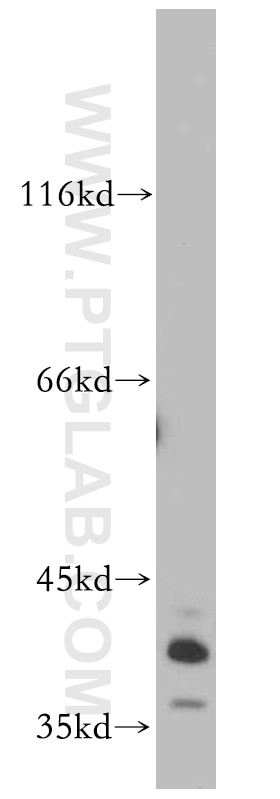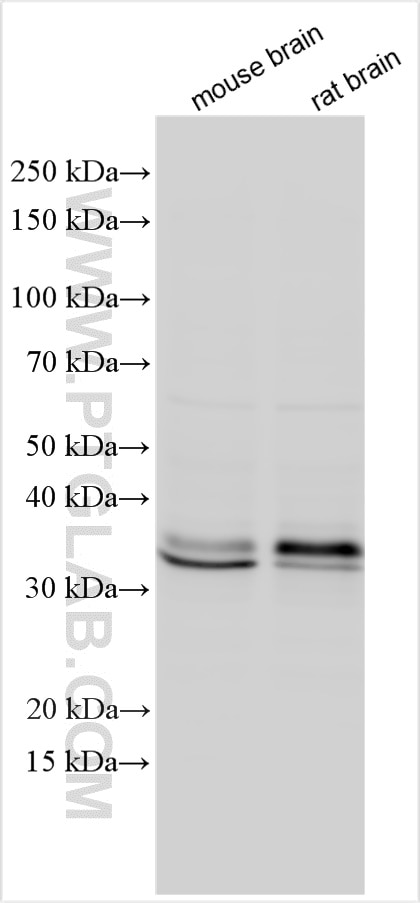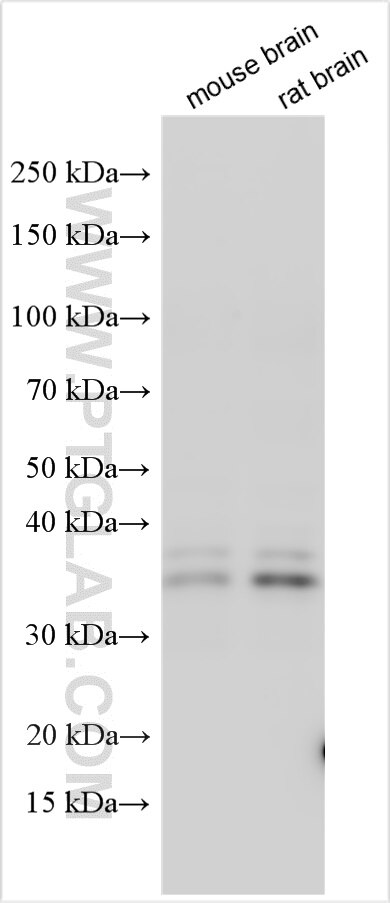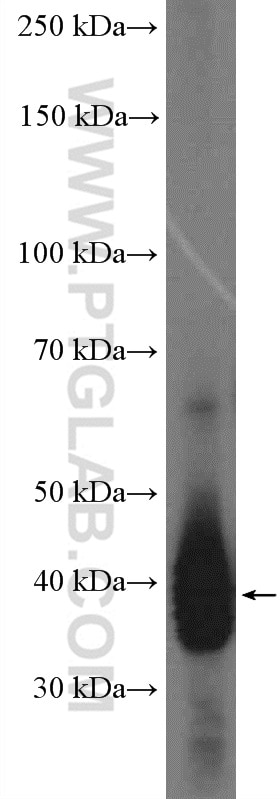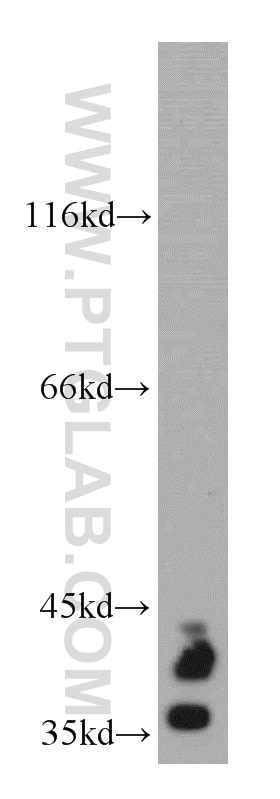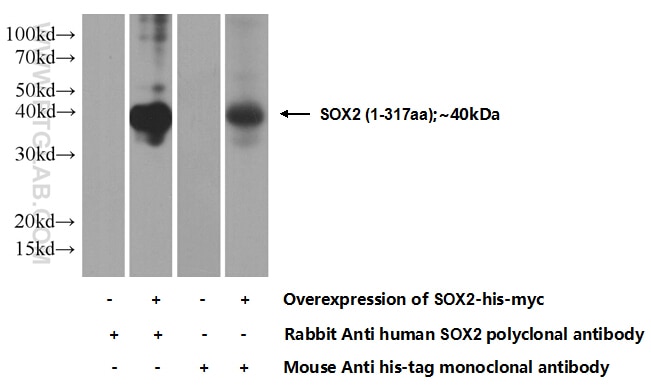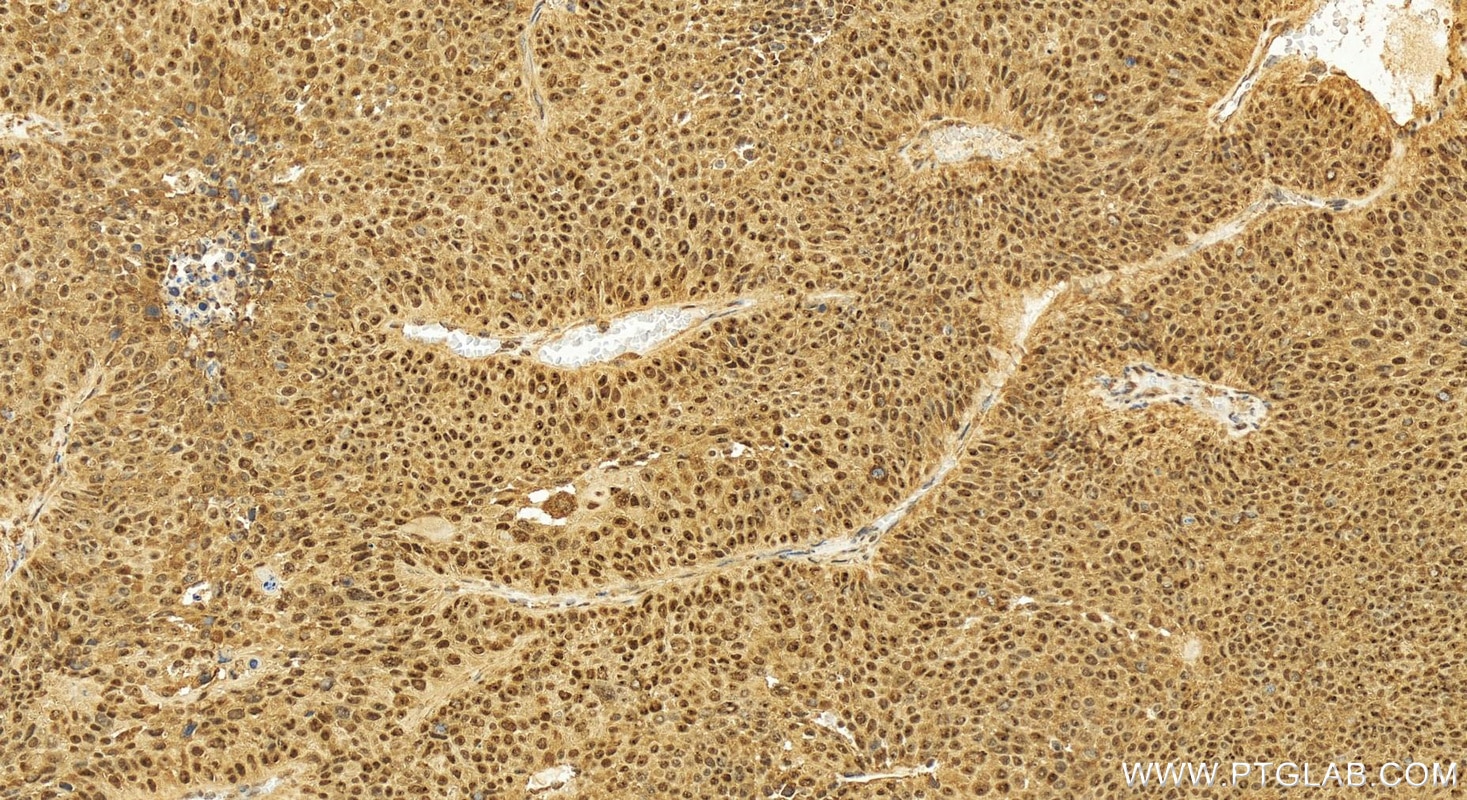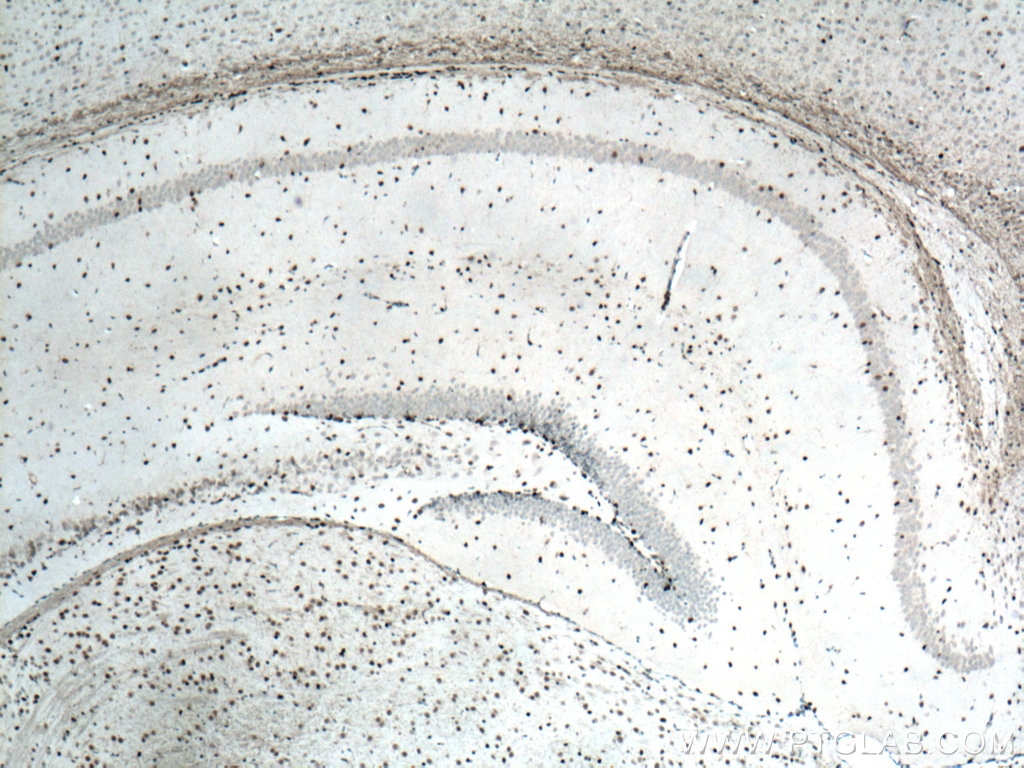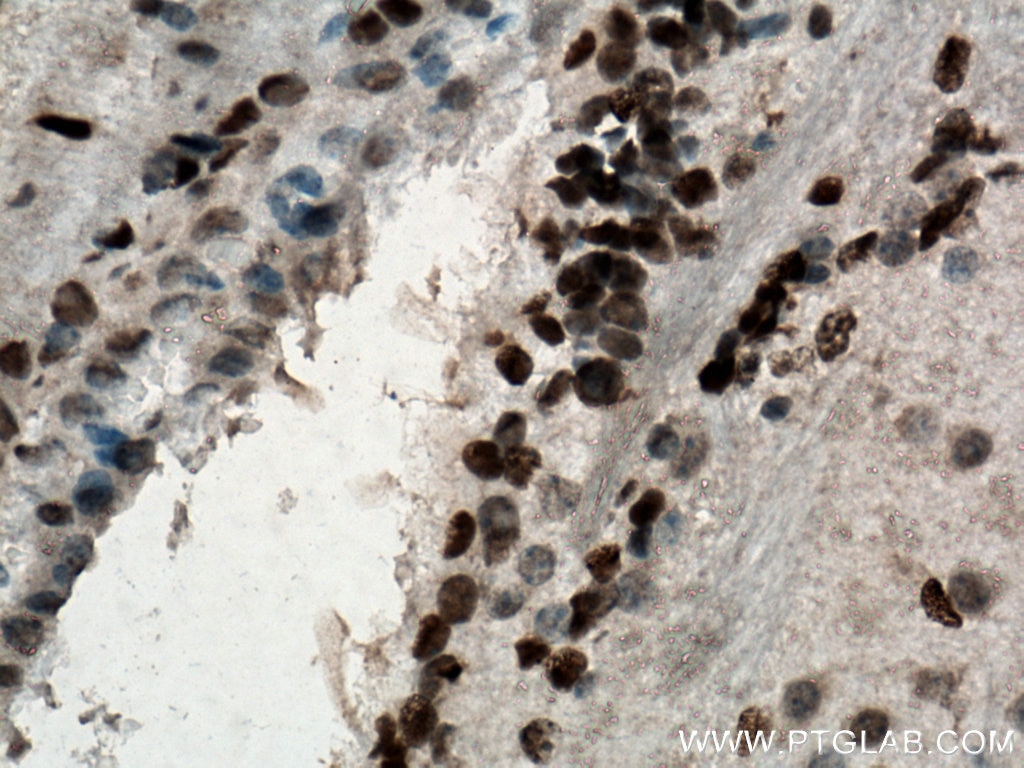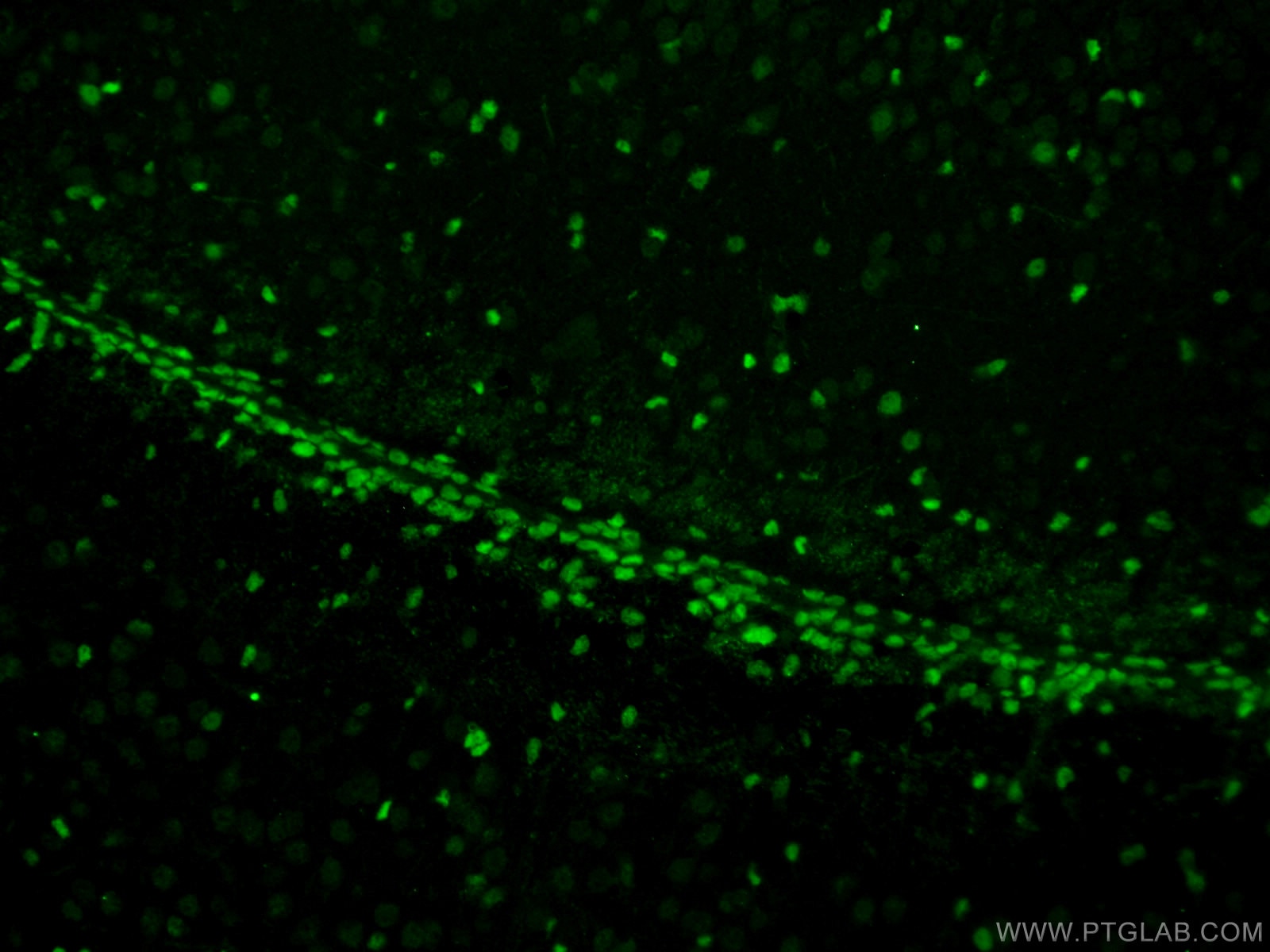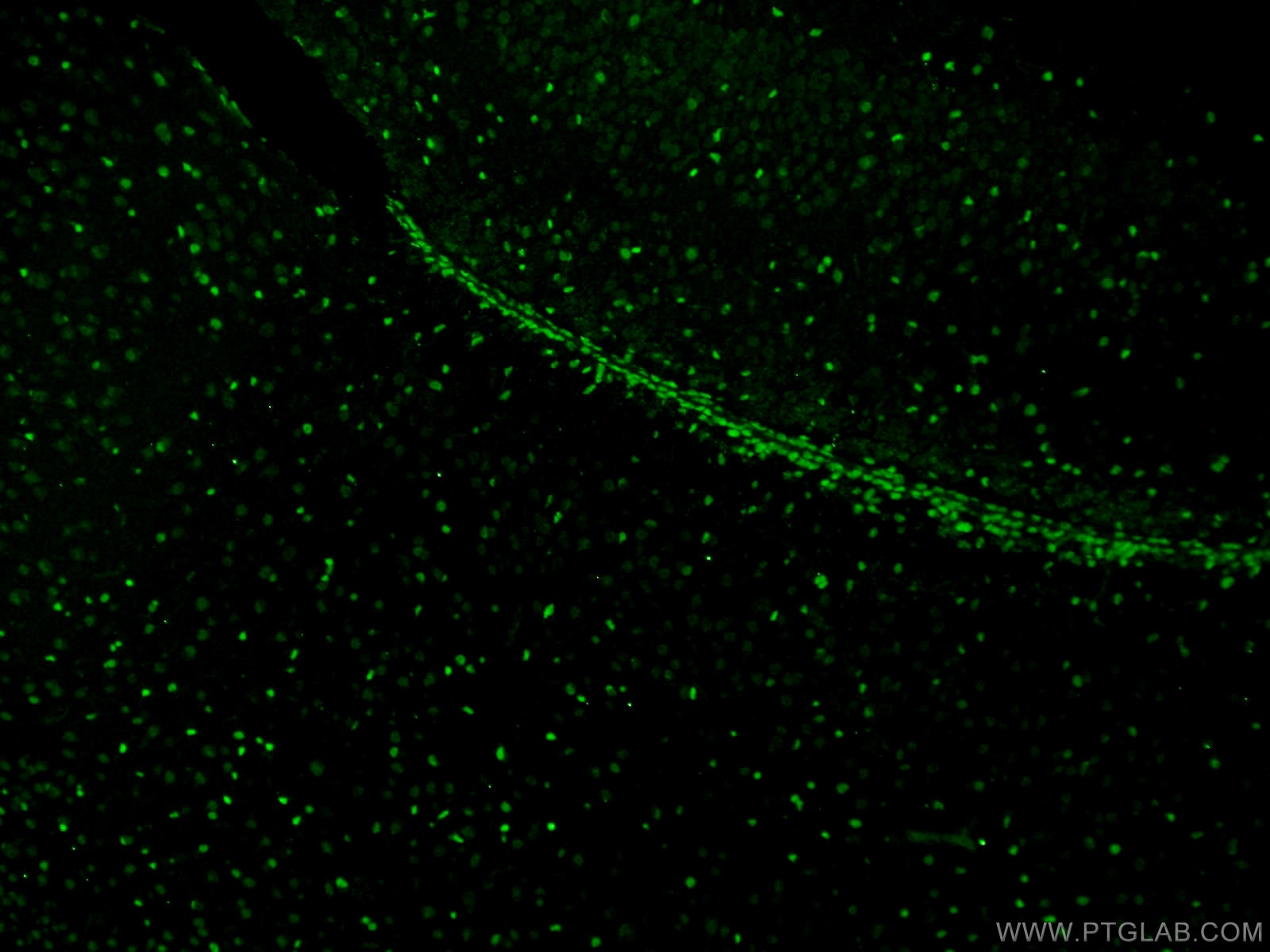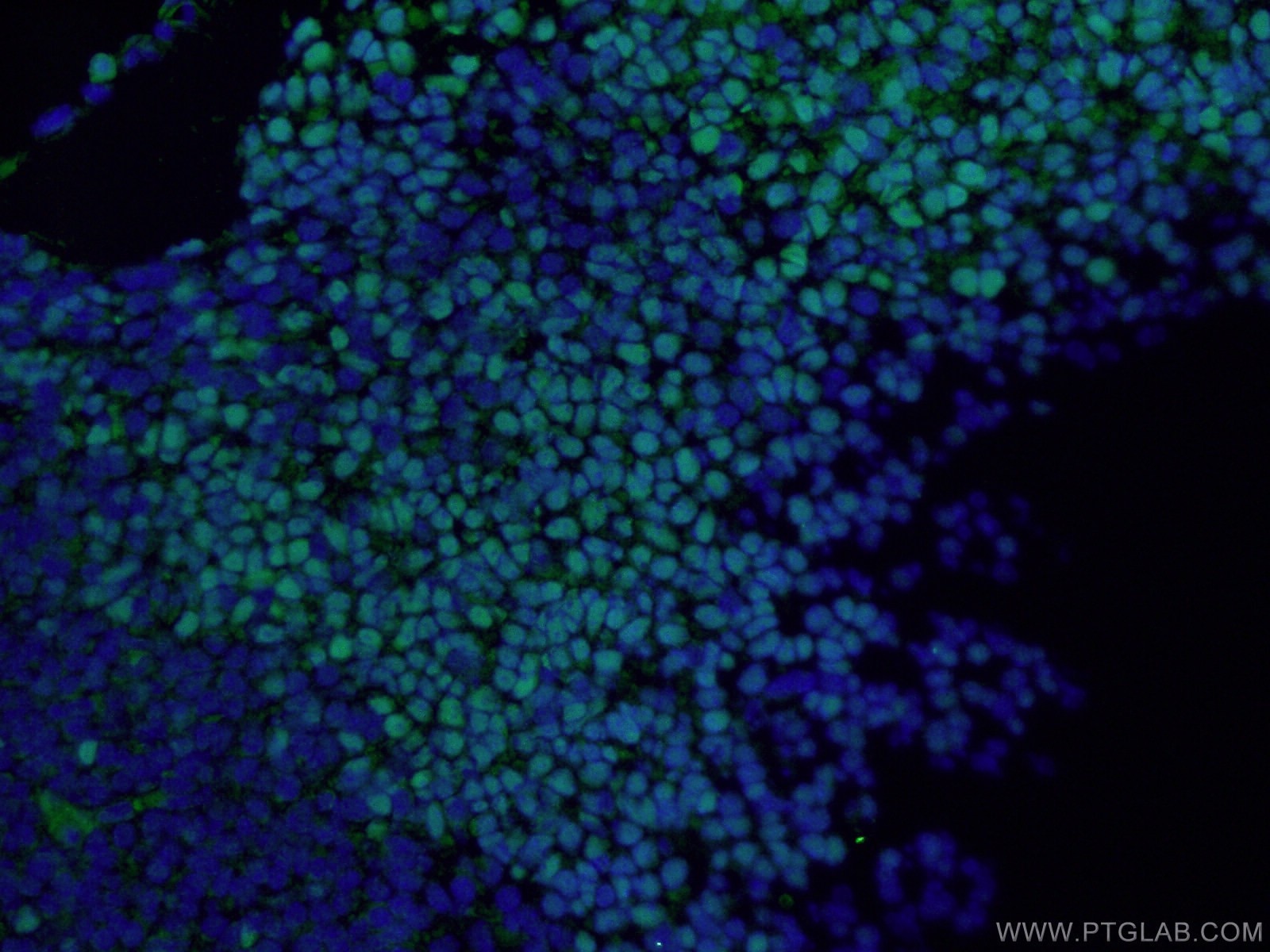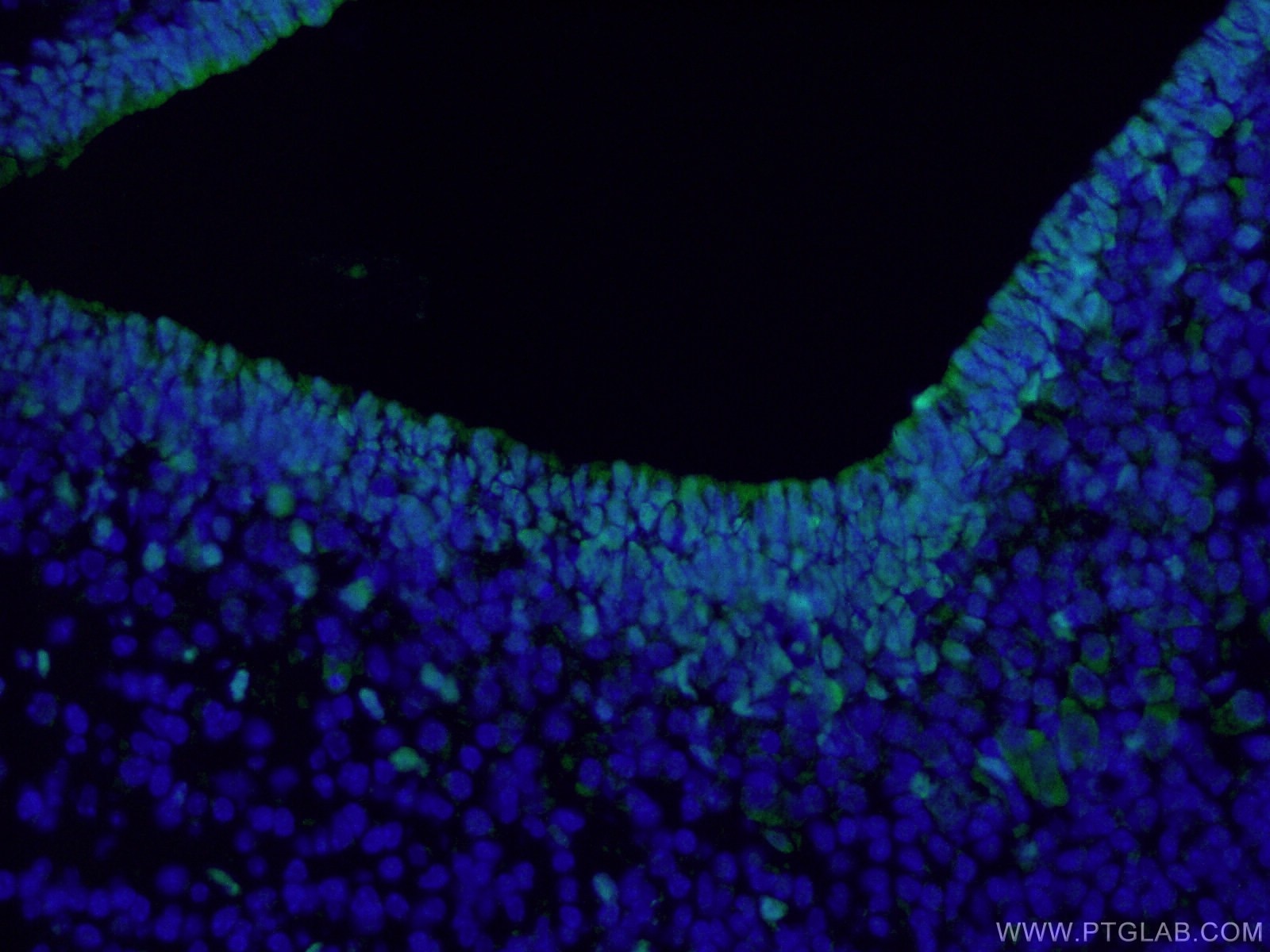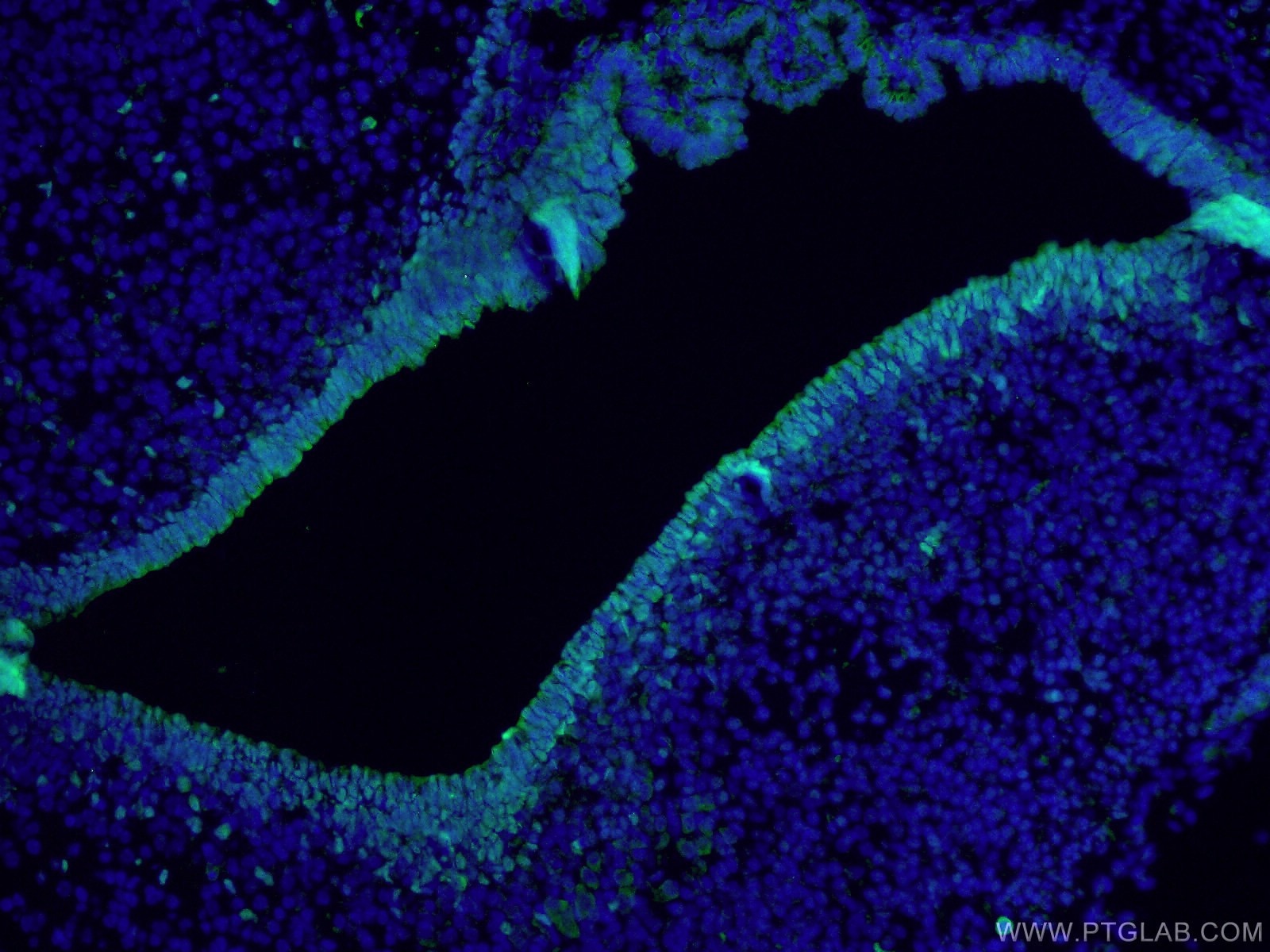Tested Applications
| Positive WB detected in | mouse brain tissue, Transfected HEK-293 cells, mouse embryo tissue, rat brain tissue |
| Positive IHC detected in | human lung squamous cell carcinoma tissue, mouse brain tissue Note: suggested antigen retrieval with TE buffer pH 9.0; (*) Alternatively, antigen retrieval may be performed with citrate buffer pH 6.0 |
| Positive IF-P detected in | mouse brain tissue, mouse embryo tissue |
Recommended dilution
| Application | Dilution |
|---|---|
| Western Blot (WB) | WB : 1:500-1:3000 |
| Immunohistochemistry (IHC) | IHC : 1:50-1:500 |
| Immunofluorescence (IF)-P | IF-P : 1:50-1:500 |
| It is recommended that this reagent should be titrated in each testing system to obtain optimal results. | |
| Sample-dependent, Check data in validation data gallery. | |
Published Applications
| KD/KO | See 1 publications below |
| WB | See 15 publications below |
| IHC | See 2 publications below |
| IF | See 5 publications below |
Product Information
20118-1-AP targets SOX2 in WB, IHC, IF-P, ELISA applications and shows reactivity with human, mouse, rat samples.
| Tested Reactivity | human, mouse, rat |
| Cited Reactivity | human, mouse, chicken |
| Host / Isotype | Rabbit / IgG |
| Class | Polyclonal |
| Type | Antibody |
| Immunogen | SOX2 fusion protein Ag13635 Predict reactive species |
| Full Name | SRY (sex determining region Y)-box 2 |
| Calculated Molecular Weight | 34 kDa |
| Observed Molecular Weight | 34-40 kDa |
| GenBank Accession Number | BC013923 |
| Gene Symbol | SOX2 |
| Gene ID (NCBI) | 6657 |
| RRID | AB_10693531 |
| Conjugate | Unconjugated |
| Form | Liquid |
| Purification Method | Antigen affinity purification |
| UNIPROT ID | P48431 |
| Storage Buffer | PBS with 0.02% sodium azide and 50% glycerol, pH 7.3. |
| Storage Conditions | Store at -20°C. Stable for one year after shipment. Aliquoting is unnecessary for -20oC storage. 20ul sizes contain 0.1% BSA. |
Background Information
Background
SRY (sex determining region Y)-box 2 is a transcription factor involved in neural stem cell maintenance and has been used in somatic cell reprogramming.
What is the molecular weight of Sox2?
34 kDa. Sox2 is an intronless gene encoding xx amino acids including HMG (High-mobility group) box domains that can bind to DNA.
What is the tissue specificity of Sox2?
In embryonic stem cells, Sox2 is highly expressed and is essential in self-renewal. In the developing embryo, Sox2 is found in the neural tube and then in the developing eye and central nervous system (CNS). This expression is highly conserved across organisms (PMID: 25126380; PMID: 8625802).
In adult tissues Sox2 is expressed in neural progenitor cells, which as multipotent cells can both self-renew and differentiate into neurons, astroglia, and oligodendroglia. It maintains their stem cell phenotype and is a useful marker of early neural stem cells (PMID: 16139372).
What is the role of Sox2 in pluripotency?
Sox2 acts as part of the LIF (Leukemia inhibitory factor) pathway, activated via JAK-STAT signaling to form complexes with other transcription factors such as Oct4 that bind to DNA and work to control pluripotency. Sox2 was described as one of the four original factors that are key to the reprogramming of somatic cells to induced pluripotent stem cells (iPSCs) (PMID: 16904174).
What is the role of Sox2 in cancer?
The ability to control pluripotency means dysregulation of Sox2 can lead to uncontrolled proliferation. In many different cancers, Sox2 has been associated with the metastasis and growth of tumors, mostly due to overexpression (PMID: 28388544). The increased levels of Sox2 RNA and protein in tumor tissue highlight it as a potential therapeutic target (PMID: 25114775).
Protocols
| Product Specific Protocols | |
|---|---|
| WB protocol for SOX2 antibody 20118-1-AP | Download protocol |
| IHC protocol for SOX2 antibody 20118-1-AP | Download protocol |
| IF protocol for SOX2 antibody 20118-1-AP | Download protocol |
| Standard Protocols | |
|---|---|
| Click here to view our Standard Protocols |
Publications
| Species | Application | Title |
|---|---|---|
Nat Methods Visualizing the native cellular organization by coupling cryofixation with expansion microscopy (Cryo-ExM). | ||
Int J Mol Sci Patients' Stem Cells Differentiation in a 3D Environment as a Promising Experimental Tool for the Study of Amyotrophic Lateral Sclerosis. | ||
Cell Death Dis Linc-DYNC2H1-4 promotes EMT and CSC phenotypes by acting as a sponge of miR-145 in pancreatic cancer cells. | ||
Sci Rep Knocking down of heat-shock protein 27 directs differentiation of functional glutamatergic neurons from placenta-derived multipotent cells. | ||
Cell Cycle LncRNA SOX2OT affects cervical cancer cell growth, migration and invasion by regulating SOX2. | ||
J Cell Mol Med Epigenetic reprogramming of human lung cancer cells with the extract of bovine parthenogenetic oocytes. |
Reviews
The reviews below have been submitted by verified Proteintech customers who received an incentive for providing their feedback.
FH Jacob (Verified Customer) (05-08-2023) | good signal in D20 old neuronal organoids
|
FH Lisa (Verified Customer) (11-07-2022) | Proteintech is always a guarantee of good antibodies! The antibodies works very well for IF, not yet tested for WB.
|
FH Ryan (Verified Customer) (02-14-2018) | NaCit antigen retrieval ph=6
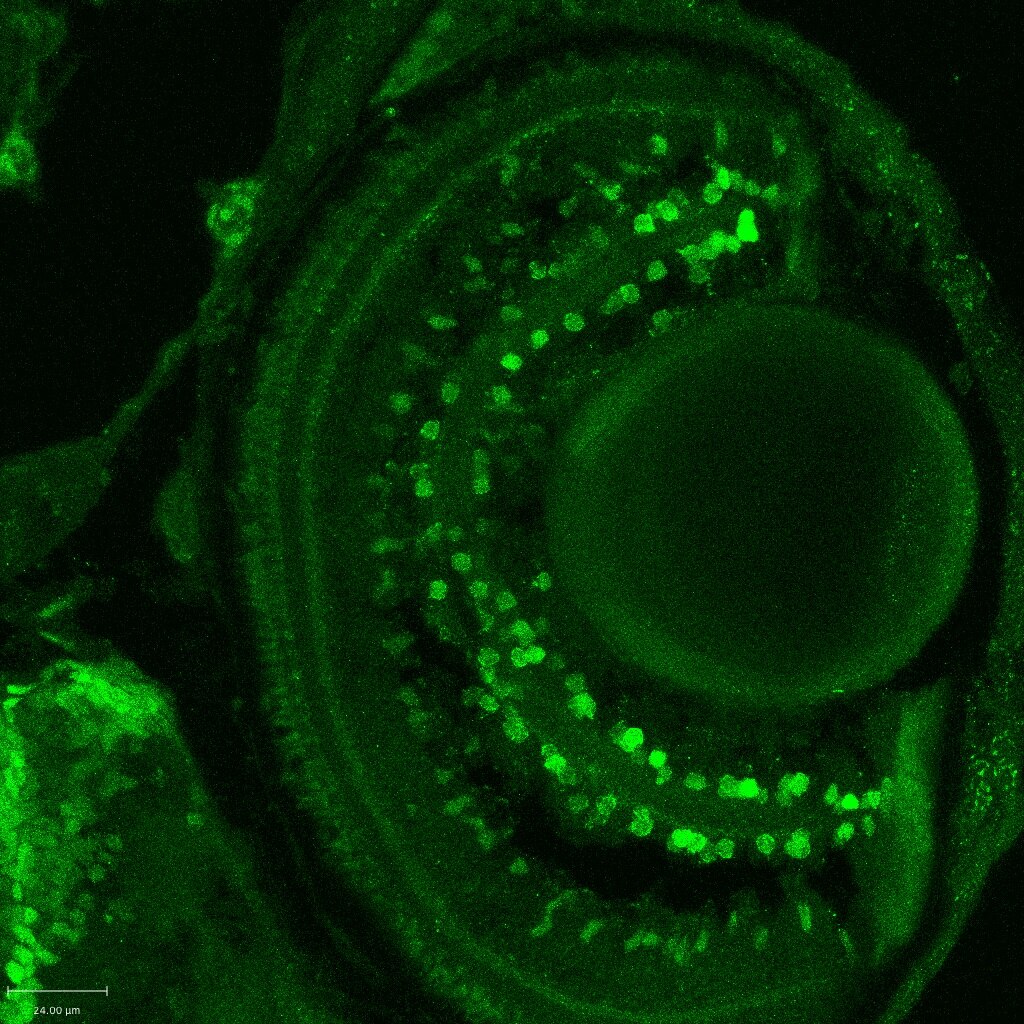 |
